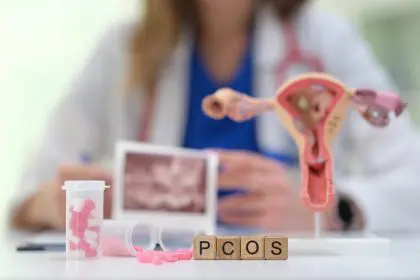Vaginal discharge is a normal part of a woman’s reproductive system. Still, it can also be a source of confusion and concern, especially for young women who are just beginning to understand their bodies. Mothers must educate their daughters about the different types of vaginal discharge, what they mean, and when to seek medical advice. This article will explore five types of vaginal discharge that women should discuss with their daughters to ensure they have a clear understanding of what is expected and what might be a sign of an underlying issue.
Understanding normal vaginal discharge
Before delving into the specific types of vaginal discharge, it is important to understand what normal vaginal discharge looks like. The average discharge is typically clear or milky white and has a mild odor. Its consistency can vary throughout the menstrual cycle, becoming more fluid during ovulation and thicker before a period. This discharge helps to clean and protect the vagina by removing dead cells and bacteria.
1. Clear and stretchy discharge
Clear and stretchy discharge, often resembling egg whites, is usually a sign of ovulation. This type of discharge is typical and indicates that the body is fertile and ready for pregnancy. Women should explain to their daughters that this discharge is nothing to worry about and is a natural part of the menstrual cycle. It is a sign that their bodies are functioning normally.
What it indicates: Ovulation, fertility
When to discuss: It is beneficial to discuss this type of discharge when a daughter begins her menstrual cycle to help her understand her body’s natural rhythms.
2. White and thick discharge
White and thick discharge is often seen at the beginning and end of the menstrual cycle. While this is usually normal, it can also be a sign of a yeast infection if accompanied by itching, swelling, or a cottage cheese-like texture. Yeast infections are common and can be easily treated, but it is important to recognize the symptoms early.
What it indicates: Normal at the start and end of menstrual cycle, possible yeast infection
When to discuss: Mothers should discuss this type of discharge with their daughters to help them distinguish between normal discharge and potential signs of a yeast infection.
3. Yellow or green discharge
Yellow or green discharge is not considered normal and can signify a bacterial or sexually transmitted infection (STI). A foul odor, itching, or irritation often accompanies this discharge. Young women need to understand that if they experience this type of discharge, they should seek medical attention promptly.
What it indicates: Possible bacterial infection or STI
When to discuss: This conversation should happen about sexual health and the importance of safe practices. It is vital to emphasize that unusual discharge warrants a visit to a health care provider.
4. Brown or bloody discharge
Brown or bloody discharge can occur for several reasons. It is often seen just before or after a menstrual period as the body clears old blood. However, suppose this type of discharge occurs at other times in the cycle. In that case, it can be a sign of different conditions, such as hormonal imbalances, pregnancy, or, in rare cases, cervical cancer. A healthcare provider should evaluate any unexpected bleeding.
What it indicates: Menstrual cycle, hormonal imbalance, pregnancy, potentially serious conditions
When to discuss: It is crucial to talk about this type of discharge in the context of understanding their menstrual cycle and recognizing when something might be amiss.
5. Watery discharge
Watery discharge can be expected, especially after exercise or during pregnancy. However, if this discharge has a strong odor or is accompanied by itching, it could indicate an infection. Regular watery discharge without other symptoms is usually not a cause for concern.
What it indicates: Normal post-exercise, pregnancy, possible infection
When to discuss: This should be part of the broader conversation about normal variations in vaginal discharge and when to seek medical advice.
Conclusion
Educating daughters about vaginal discharge is an essential part of helping them understand their bodies and maintain their reproductive health. By discussing these five types of vaginal discharge, mothers can provide their daughters with the knowledge they need to recognize what is expected and when to seek medical attention. This education will empower young women to take charge of their health and well-being, fostering a sense of confidence and understanding about their bodies.
This story was created using AI technology.
















